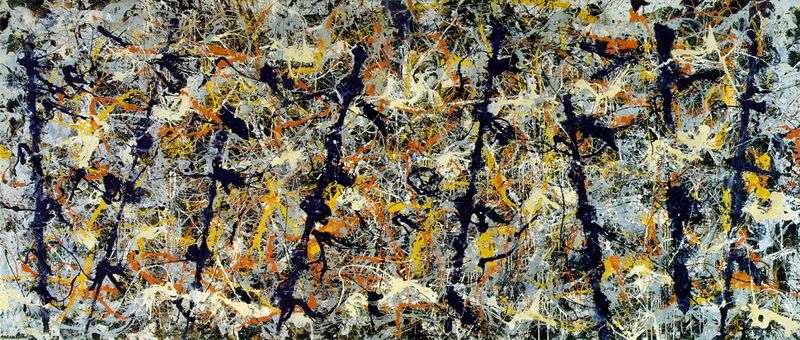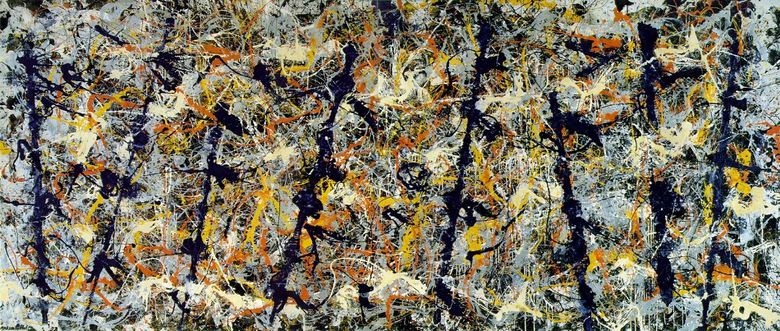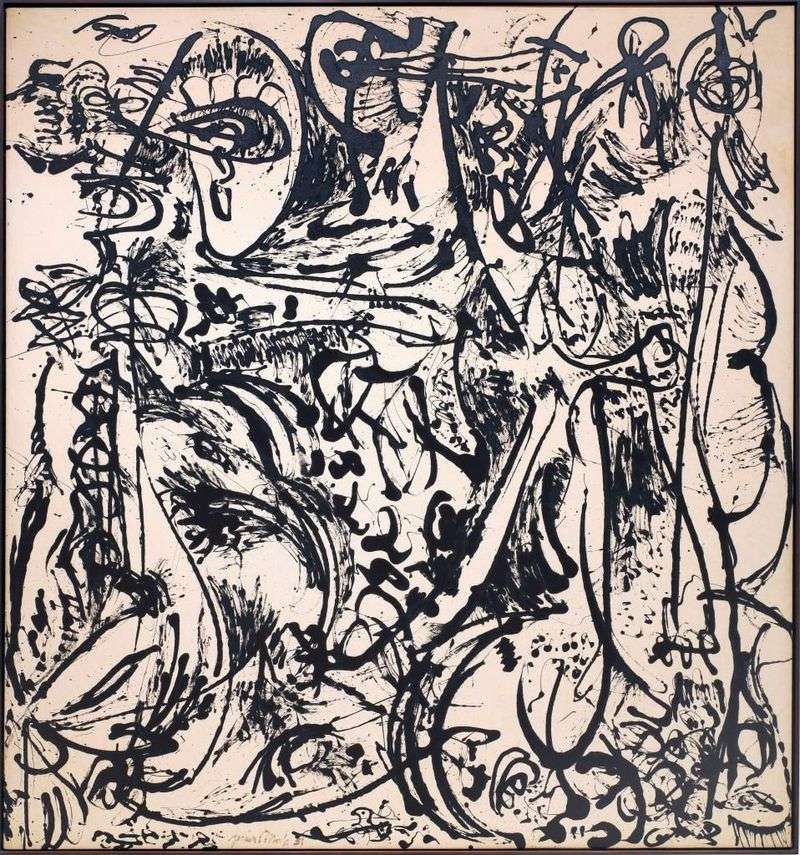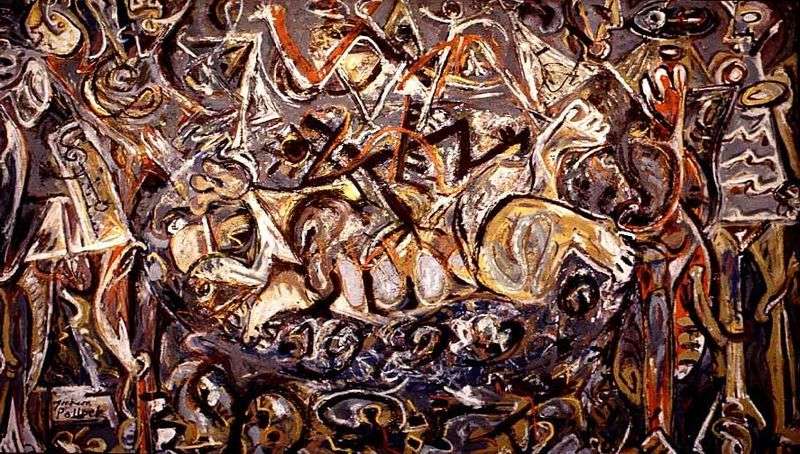
The beginning of the crisis dates back to 1952, eventually driving Pollock to his grave. Scandalous fame did not bring him, by and large, neither widespread recognition nor money. The family was falling apart before our eyes. Works were not sold. The artist drank, ever less coming up to the canvas.
And yet Pollock agreed to fulfill the request of his friend, architect Tony Smith, who offered him to paint a picture in the style of his star, 1950, year. As a result, the Blue Poles were created. The width of this canvas reaches almost five meters, its entire surface is densely covered with paint. “Blue poles” is often called the “Baroque painting.”
 Pôles bleus – Jackson Pollock
Pôles bleus – Jackson Pollock Blue by Jackson Pollock
Blue by Jackson Pollock Number 1A by Jackson Pollock
Number 1A by Jackson Pollock Echo by Jackson Pollock
Echo by Jackson Pollock Convergence by Jackson Pollock
Convergence by Jackson Pollock No 5 by Jackson Pollock
No 5 by Jackson Pollock Summer by Jackson Pollock
Summer by Jackson Pollock Pasifaya by Jackson Pollock
Pasifaya by Jackson Pollock